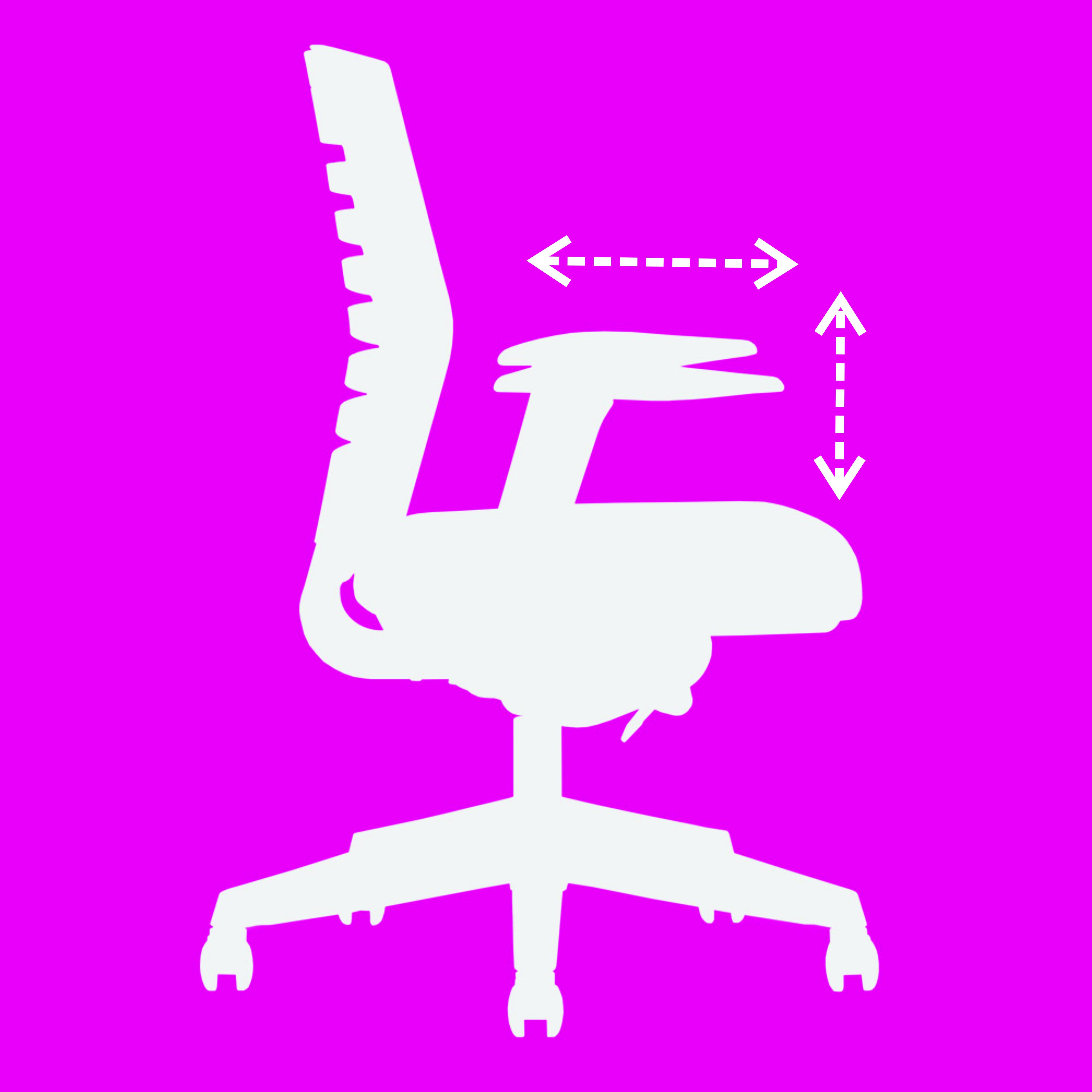Chair Mechanisms that work for you
How do we know which adjustments and mechanisms work for us? Here are a brief guide and a few tips to help you adjust your seat to the best posture, for optimal comfort.
Seat Height Adjustment

Your seat height should include both slightly lower and slightly higher height ranges than your ideal setting. Users 5’0” to 6’4” tall require a seat height range of 15” to 22”. Best office chairs have a pneumatic height adjustment feature so you can adjust the seat pan height while you sit on the chair.
Seat Pan Size and Depth Adjustment
Adjust the seat of your ergonomic office chair so your knees are slightly lower than your hips. The seat pan should be deep enough so that there is no contact with the back of your knees, but not so wide that your arms cannot rest on the armrests. Larger users should check the weight capacity of the chair for safety measures.

You know when your chair is in the right position when two of your fingers fit between the back of your knee and the front of the seat. A correct seat depth is when you can position the curve of the seat to meet your curves and utilize the lumbar support/curve of the chair back.
Backrest Height Adjustment

The backrests slide up and down to allow the lumbar support of the chair to fit into the curve of the lower back (orthotic).
Back Angle Adjustment

Reclining is a very important aspect as it relieves weight from your lower back while supporting the weight of the upper body. Most ergonomic office chairs have back angles adjustments that include multiple lock positions, helping you find the most comfortable reclined angle. Especially for people with spine-related health issues a recline angle of 110°-130° reduces lumbar disc pressure and lowers back muscle activity.
Back Tilt Tension Adjustment

Perfectly ergonomic chairs have this feature where a knob allows you to adjust the amount of force required to recline to your body weight.
Lumbar Support

The best of ergonomic office chairs features a lumbar support that offers both vertical and depth adjustment. Most office chairs with basic features include a lumbar support that can be adjusted vertically. An integrated fixed lumbar support gives support where you need it and adjustable lumbar support encourages improved posture with full adjustability.
Armrests

Relives strain by providing support or arms. Chair arms should be height and width adjustable and should not interfere with the elbow movement. A pivoting arm is a useful feature as it will allow some users to better position the arms for support while typing.
Stable Wheel Base and Quality Casters

The office chair base should have a minimum five-spoke base. Four spoke bases tend to tip over when reclining back in your chair. Quality casters glide freely over various floor surfaces.
Headrest

A headrest provides support for your head and can reduce the weight your neck must support. If you have neck issues, strongly consider buying a chair with a headrest.
An ergonomic chair offers supreme levels of comfort as it carries all the required adjustments that are logical, intuitive and in tandem with the shape and size of the user’s body.
Whether for an executive’s office or a director’s cabin; reception area or waiting lounge, seminar chairs or conference room chairs; high back or mid-back, to browse for the best perfectly ergonomic office chairs, visit www.idus.in/office/office-chairs.

